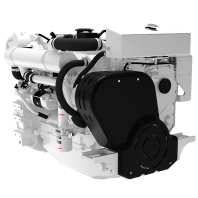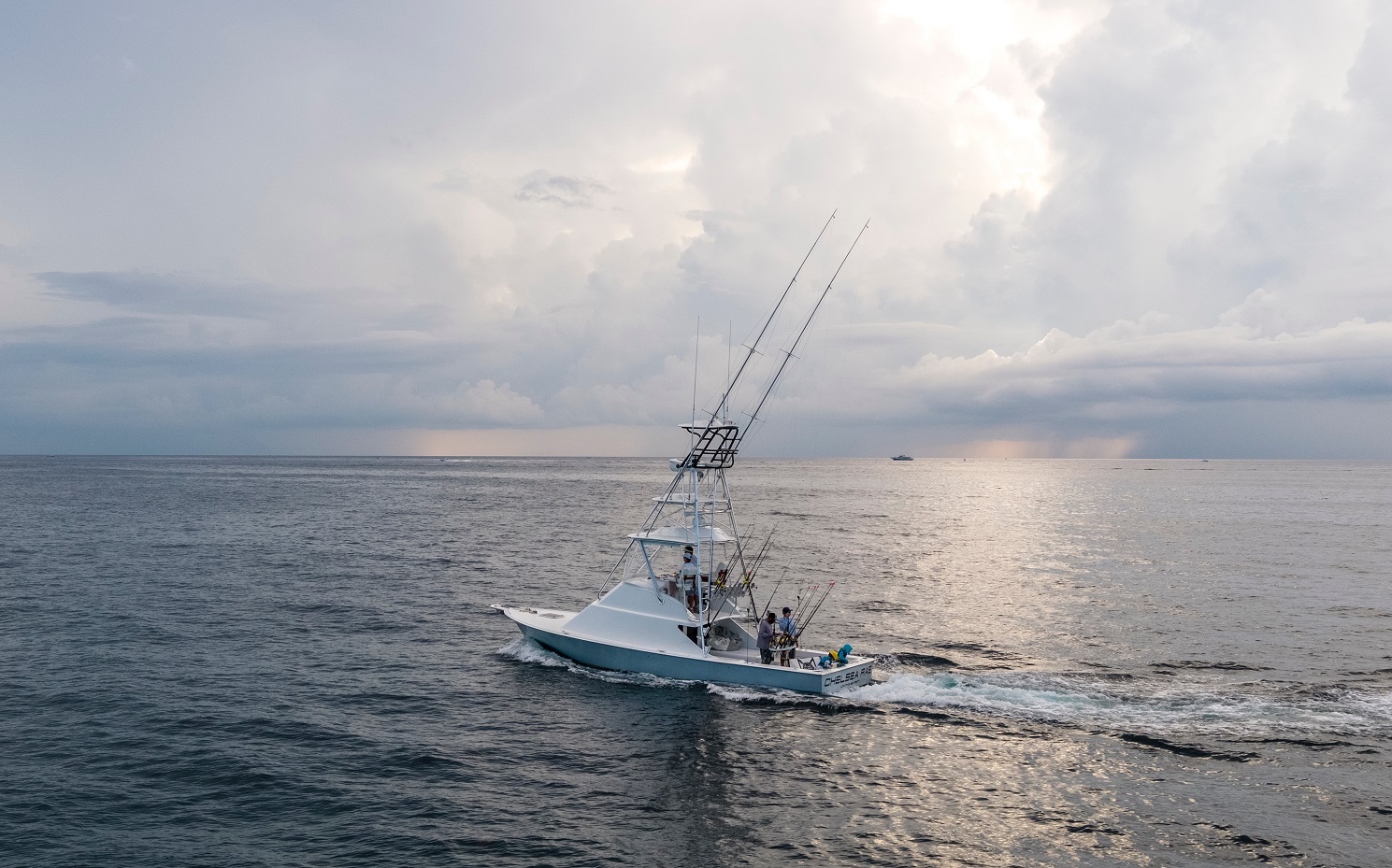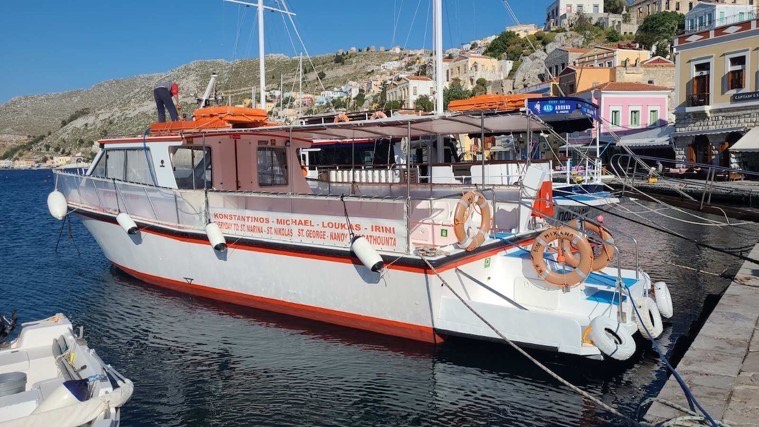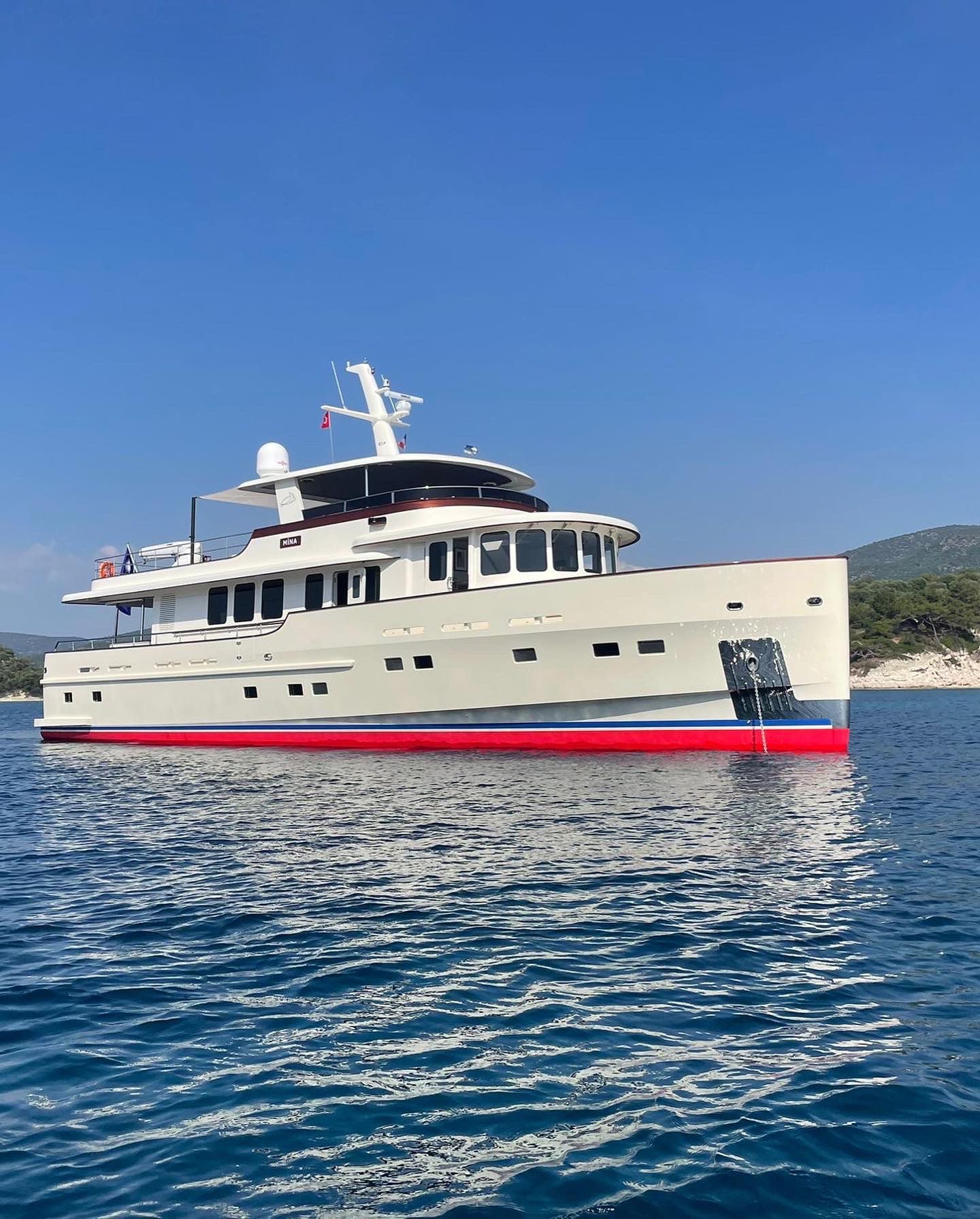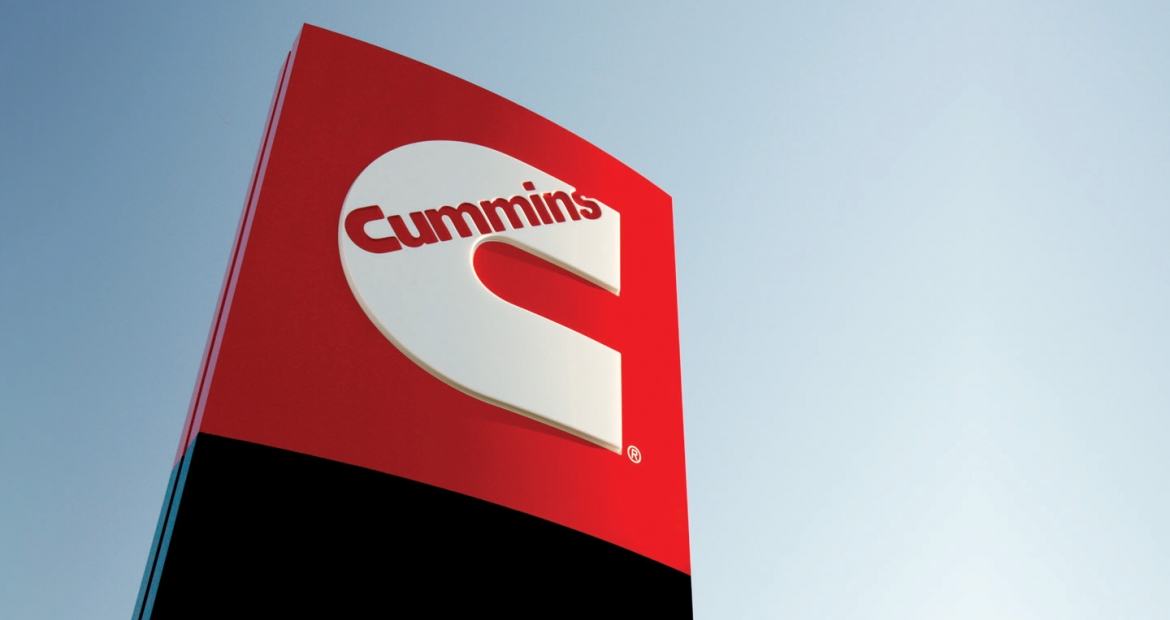
Cummins Vessel Reference #771
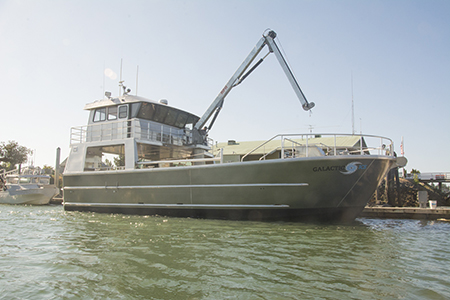
We use 10,000 pound anchors on the nets,” said Keith Carpenter as he explained the complexities of this traditional salmon fishery. Carpenter is the president of Lummi Island Wild, the organization that manages and markets the catch from several reef nets. Carpenter was explaining the need for the 12-inch moon pool and heavy winch located forward and midships on the deck of the newly launched Galactic Ice. “When we have to move an anchor we will send down a diver to attach a line. We can then pull that up off the bottom, utilizing the winch and moon pool, then move it while suspended under the boat.
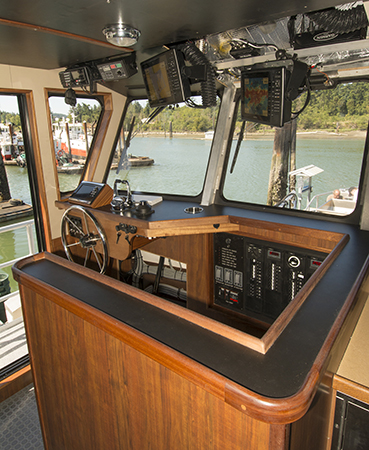
This was just one of a wide range of features that were designed into the boat which carries a 24-foot beam on a length of just under 50 feet. The bow has a raised fo’c’sle with bunks and head. A low waist deck extends aft to a poop deck that raises about three feet to provide a good engine room space. An open area over the poop deck has pillars on either side with a head in one and engine room access in the other. The raised wheelhouse, extending nearly the full width of the boat, includes a basic galley, mess table and two more bunks in addition to the usual GPS, electronic charts, radar and other navigation and system controls.
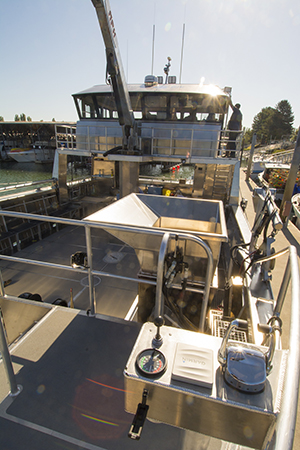
This is a highly practical workboat. Carpenter, President, and Dave Hansen, General Manager of Lummi Island Cooperative along-with Lummi Wild’s reef net manager Ian Kirouac worked with Zachery Battle, one of the principals of La Conner, Washington’s Mavrik Marine, to draw up the design. This was then passed to Jensen Maritime who did the final engineering and hydrostatics upon which Mavri’s in-house staff finished the final modeling and construction details. Mavrik Marine is a relatively new aluminum yard with a strong reputation for innovation and quality. Both of these are well represented in the Galactic Ice. “This is the first purpose built tender for the reef net fishery,” said Carpenter.
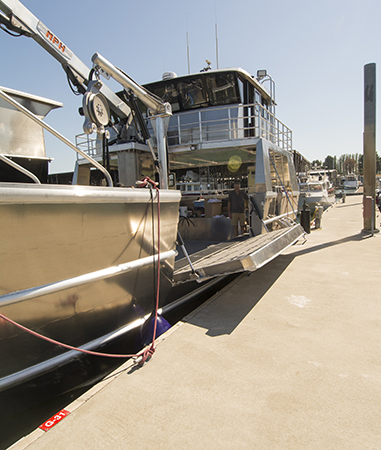
Even the casual observer will note the quality of Mavrik fabrication. None of the welds have been ground, so that each and every one of them proudly proclaims the proficiency of the welders by looking like “a stack of new dimes”. One of the final touches was a worker carefully going around each of the decks’ non-skid pads with a tube of waterproof sealant. “It a good thing that I paint at home so I have a steady hand,” he proclaimed proudly.
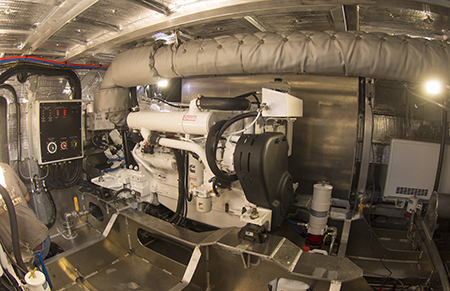
With capacity for two layers of 37 insulated totes in the waist deck, the boat can pack a total of 130,000 pounds. Skiffs will transfer the fish from the reef net platforms, where they have been live-bled for quality, to the tender. On the port side the whole bulwark lowers hydraulically to allow skiff to off load from their level. On the starboard side an aluminum boom can be extended out for mooring of skiffs waiting to off load. A crane, mounted mid-ship at the front of the wheelhouse can lift up to 2,000 pounds at 30-feet, so it will easily be able to handle the totes of iced fish which weigh between 15 and 1800 pounds. Quality is given priority for the catches of Fraser River sockeye. When ice is kept in totes for any length of time it fuses into solid chunks that can, in turn, bruise the fish. To prevent this, there is a “refresher” mounted on deck to re-work the ice back to small particles.
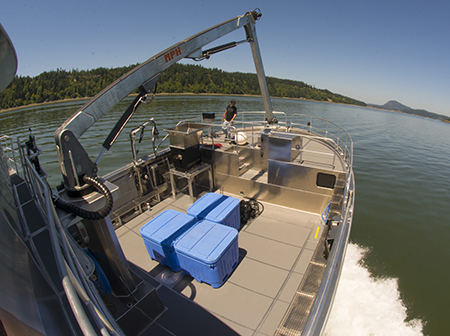
There are a total of eleven set nets in the area and they will all deliver to the new tender. The boat will then carry the fish to a custom processor in Bellingham. A pair of six-cylinder Cummins QSL9 marine diesels provides propulsion for this unique vessel. Linked to the propellers through ZF325 IV gears with 2.027:1 ratio V-drives, the engines are set well aft to provide more cargo space forward. Rich Murdy of Cummins Northwest explained that, “Delivering 410 HP at 2100 RPM each, these engines are rated Medium Continuous Duty which gives them the same pedigree with the well known 19 liter model of Cummins engines. Like the larger engine they have replaceable liners in the cylinders and cast iron pistons among other features associated with work boat engines and longevity.
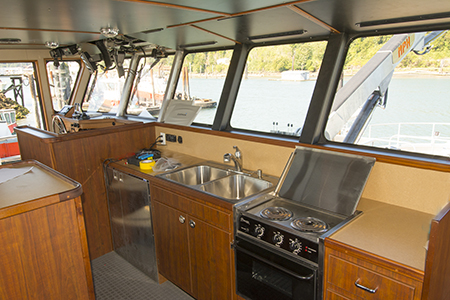
While the Galactic Ice is a unique vessel, it shares many features in common with successful northwest coast boats. Not the least of which is quality aluminum construction and quality Cummins propulsion. Mavrik’s Zachery Battle summarized the project, “Building the F/V Galactic Ice was a great collaboration from the start – from the interaction with the clients to the integration and collaboration with Jensen Marine Architects and engineers – this was and is a good partnership. It’s been a lot of fun understanding the goals and objectives of all the partners at Lummi Island Wild and then putting those ideas into the design which was ultimately realized with the creation of the Galactic Ice. There were a lot of parts to the puzzle but our team has done a great job of execution and the final product represents that well. Mavrik has been very lucky with the quality and commitment of its clientele; Lummi Island wild is at the top of the list.”
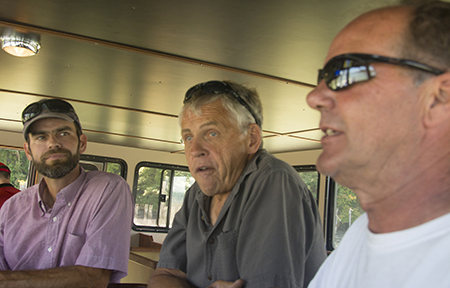
Haig-Brown photos courtesy of Cummins Inc.
For further information:
Mavrik Marine Inc.
780 East Pearle Jensen Way
La Conner, WA 98257
Phone: 360 296 4051
E-mail: info@mavrikmarine.com
Web: www.mavrikmarine.com
Keith Carpenter
President and Executive Director
Lummi Island Wild Co-op
1956 Edgefield Dr.
Bellingham, WA 98229
Web: http://www.lummiislandwild.com
E-mail: Keith@lummiislandwild.com
Rich Murdy
Cummins Northwest Inc.
811 SW Grady Way
Renton, WA98057 2944
E-mail: rich.murdy@cummins.com
Phone: 425 235 3400
Mobile: 206 786 3229
Trophy fish are measured by weight and length at the dock. They almost always exceed the size of the angler reeling them in. The exception would be M/V Chelsea ...
Greek passenger vessel repowers with Cummins. Cruising to Symi on a water taxi is more than a boat ride across the Aegean Sea. Departing the eastern sh...
Crews with no choice but to head out to sea in rough weather conditions rely on trawlers' inherently robust, stout design based on the DNA of highly capable fis...
